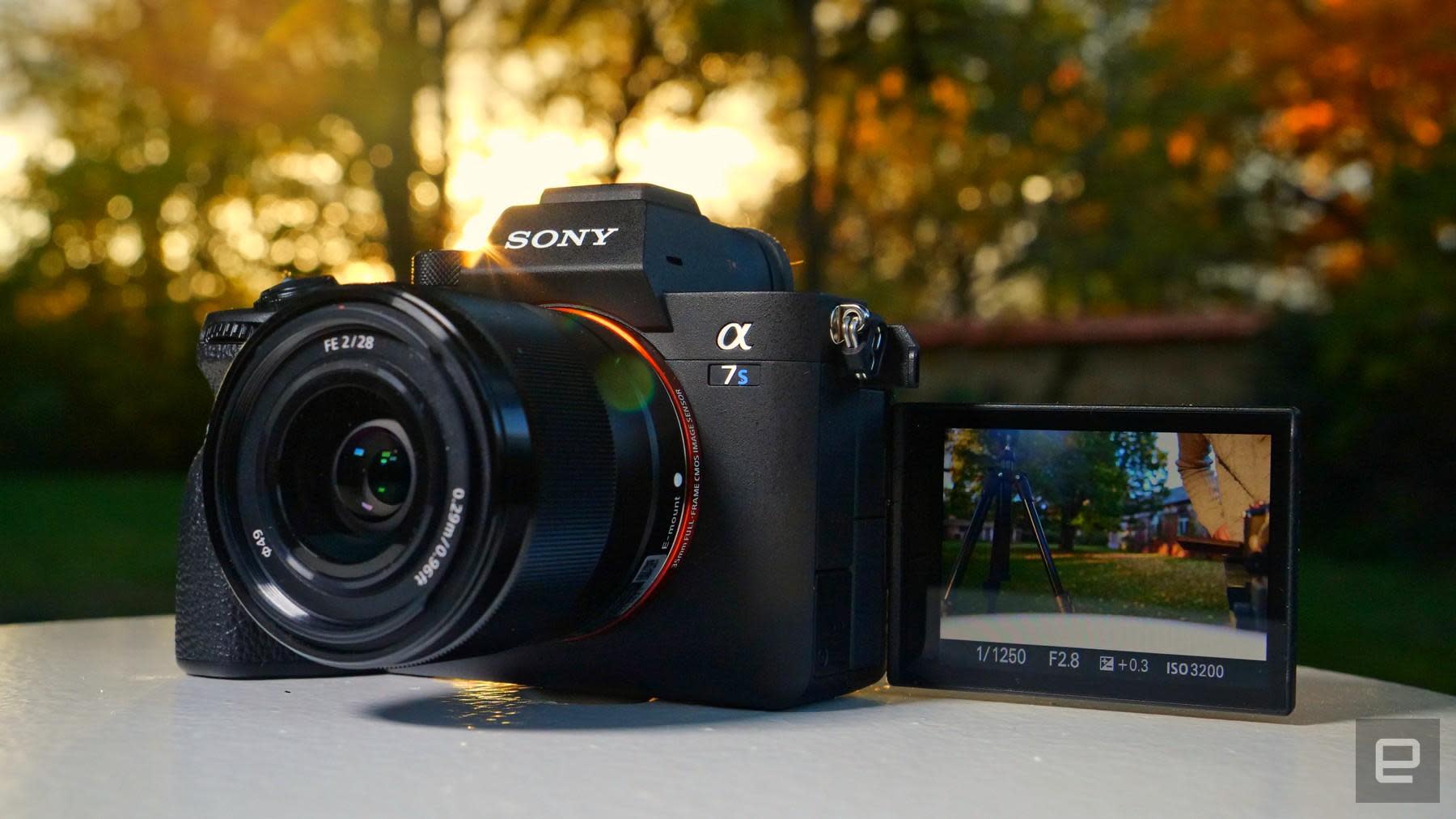
While it lacks the dedicated exposure dials that Fuji fans know and love, its simpler mode dial is more accessible to newcomers. If you don't need more advanced features like internal 10-bit recording and weather sealing, the X-S10 is for you.

The Fujifilm X-S10 comes at a lower price than the Canon EOS R7 but still offers a ton of value.

If you're considering an APS-C camera for portability, you may prefer the Fujifilm X-S20, which is smaller and cheaper but has slower burst shooting and a slightly less reliable autofocus system. Performance aside, it's also sturdy and weather-sealed, with an outstanding battery life among mirrorless options. The camera also has best-in-class autofocus and quick burst shooting, so it's a great choice for sports and wildlife photography. With a fantastic in-body image stabilization system, it's well-equipped for handheld video work or photos at slower shutter speeds. Besides, there's enough to love about this camera that it's still a top contender in this price range. Although crop sensor RF lenses are still limited, you can always adapt EF lenses if you're already a Canon DSLR shooter. It's a well-rounded APS-C camera with everything you need to capture high-quality photos and videos. The Canon EOS R7 is the best mid-range model we've tested. Though its smaller sensor doesn't handle noise in low light as well as the Nikon's full-frame sensor, its remarkably high 40-megapixel resolution captures stunning detail and gives you a bit more leeway to crop your images.
BEST MIRRORLESS FRAME CAMERA FOR VIDEO PORTABLE
If you're looking for a more portable kit and don't mind giving up a full-frame sensor, the Fujifilm X-T5 is a fantastic enthusiast-oriented APS-C model that falls around the same price point. Nikon's Z lenses are also spectacular, particularly the high-end S Line, although they can be quite pricy, and lens selection is still limited compared to competitors. Plus, it handles like a dream, with amazing ergonomics and an intuitive user interface. You'll get excellent image quality from its sensor and very quick burst shooting for faster subjects. Though it falls behind in advanced video features, this is still a well-rounded camera for amateurs and enthusiasts. The Nikon Z 6II is a more affordable full-frame option than the Sony α7 IV and a fantastic camera for photography. However, lens selection is much better for Sony's E-mount, with both native and third-party options available at various price points, making the α7 IV our top pick overall. Unlike the Sony, it supports RAW video output over HDMI and uncropped 4k at 60 fps. It's a good alternative to the Sony if you need faster burst shooting, with a burst rate of up to 40 fps in its electronic shutter mode. On top of that, it has an updated autofocus system with some of the most reliable AF tracking on the market and advanced features like in-body image stabilization (IBIS) and dual memory card slots. It's also a video beast, with 4k recording at up to 60 fps, albeit with a notable crop, and internal 10-bit 4:2:2 capture.Īnother great option at this price point is the Canon EOS R6 Mark II. If you're looking for a powerful hybrid camera that can handle all kinds of photo and video work, this is a sure bet. Improving on the best-selling Sony α7 III, it has a new 33-megapixel sensor that captures an amazing level of detail. The Sony α7 IV is the best mirrorless camera we've tested. If you're more interested in video, you can look at our favorite cameras for filmmaking or vlogging. If you're buying your first camera, you might also want to look at our top mirrorless cameras for beginners. Below, you'll find our top mirrorless camera recommendations for most people. If you're specifically looking for a full-frame model, check out our best full-frame mirrorless cameras article instead. But we've bought and tested over 90 cameras in our lab to help you narrow down your options. The good news is you can't go wrong with any modern camera released within the past few years. They've come a long way in a short period of time, with a constantly expanding market of different models to suit a range of budgets and experience levels. While we firmly believe that you don't need the latest or greatest camera to take good photos or enjoy photography-and we even think DSLRs can be some of the best cameras for beginners-mirrorless cameras have a few advantages. They're typically more portable than traditional DSLRs, feature responsive, precise autofocus systems, and have electronic viewfinders that let you preview exposure adjustments in real time.

While, for some, that may mean there's no better time to get a DSLR, as their prices drop, getting a mirrorless camera is the way to go if you want to enjoy the best that camera tech offers. With camera stalwarts like Canon and Nikon announcing they'll no longer produce new DSLRs, mirrorless cameras have all but won the camera technology wars.


 0 kommentar(er)
0 kommentar(er)
